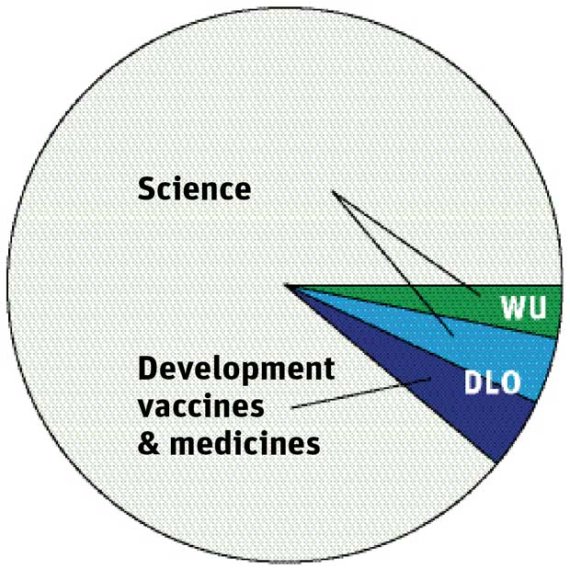Mice, fish and chickens – those are the main categories of animals used by DLO institutes for scientific research. In Use of laboratory animals within Wageningen UR, the report that appeared early February, DLO discloses for the first time how many animals it uses: 46,000 a year. That is twice as many as the university. Further inquiries revealed the trends and developments in DLO’s experiments with animals. A particularly striking trend is the increase in the number of fish used in experiments. Numbers rose from over 4400 to 17,000 in a two-year period. That makes fish the most commonly used lab animal within DLO. This is due to the rise in fish farming; aquaculture is a new, fast-growing branch of the intensive farming sector. That is leading to contract research aimed at optimizing production and the conditions in which the fish are kept. The research is carried out in IJmuiden, and currently largely in Yerseke.
Swine flu
DLO also used an exceptional number of mice in 2011 – nearly 16,000, compared with an average of 9000 in previous years. That increase is because of flu research, says Paul Kroon, DLO’s lab animal expert. The outbreaks of bird flu and swine flu led to diagnoses of various strains and the search for a universal vaccine. And that means using mice: the law states that new drugs have to be tested on rodents first. In the past, the animal disease institute CVI in Lelystad also used to use a lot of mice for the diagnosis of botulism in water birds. That number has fallen considerably over the last 20 years, from 15,000 in the 1990s to 8000 a year now. They used to test every dead waterbird for botulism but that is no longer necessary. The number of chickens used has also fallen sharply, from 17,000 in 2009 to 8000 in 2011. Livestock Research, the DLO institute for livestock farming, has passed on a lot of the poultry research to Schothorst, a science institute for animal feed in Lelystad.
65,000 – is that a lot?
DLO and the university combined used 65,000 lab animals in 2011. What does Marja Zuidgeest, the director of anti animal testing society Proefdiervrij, think of this number? ‘I find it difficult to compare this to other institutions but I do find 65,000 rather a lot. The Erasmus university hospital uses 48,000 animals. Other major users that come to mind are TNO and RIVM, although we don’t have the numbers for them.’ The number of lab animals used by DLO has been creeping upwards over the years, says Paul Kroon. As DLO’s lab animal expert, he gives advice on the evaluation of animal testing applications. ‘It’s a recurring question: can we do this with fewer animals?’ Sometimes that is possible, and there are more and more alternative methods. But despite this, the number of animal experiments is not going down. Kroon: ‘We are having to deal with outbreaks of new diseases we’ve never heard of before, such as Q fever and Schmallenberg. Other diseases are emerging; the West Nile virus started in North Africa but has now been observed in Italy and Spain. Society wants us to research this.’ According to Kroon, this puts them in a quandary. ‘On the one hand consumers are demanding guaranteed safety, on the other hand they say we mustn’t use so many animals. That is a huge dilemma.’ Zuidgeest does not see that dilemma. ‘Society wants safe products but without animal testing. That’s possible because there’s always more than one option. Fifty years ago we needed 500 rhesus monkeys to produce polio vaccines and now we can do this without monkeys. The cosmetics industry has made huge progress towards animal-free testing, albeit under pressure.’

